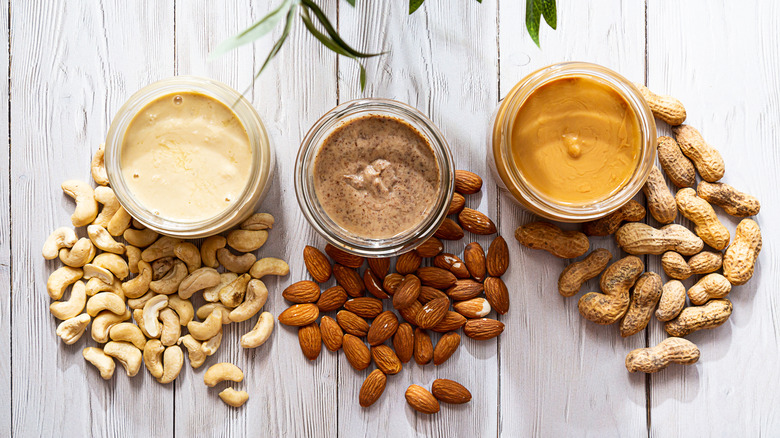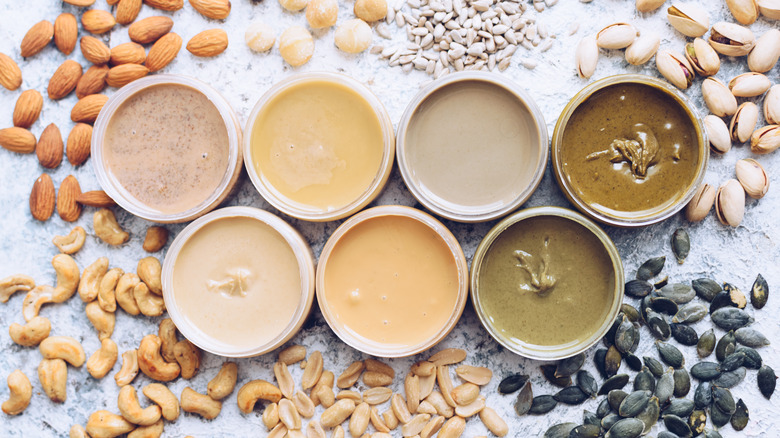Is It Dangerous To Eat Moldy Nut Butters?
The peanut butter and jelly sandwich is a lunchtime classic and a favorite among elementary school-aged kids. Nut butters — like almond, pecan, walnut, or cashew — can be great alternatives for those with certain dietary needs or people that just doesn't care for the taste of peanuts. A warm slice of toast with your favorite nut butter on top can be a great breakfast treat and an added boost of protein to kickstart your day. Peanut butter has about 8 grams of protein per serving and almond butter has 5 grams (via Cedars Sinai).
If you open your jar of nut butter and find a small amount of mold on the top, you may find yourself wondering if it would be safe to scrape the mold off and eat the rest. Although some foods, like carrots and some cheeses, are safe to eat once you've removed and discarded the moldy portions, it is commonly considered unsafe to eat moldy food. The risk of illness is too high for most foods. But where do nut butters fall on that scale?
How long does nut butter last?
Once you've open a jar of your favorite nut butter, it should be stored in the fridge for maximum freshness. It is important to note that nut butters which are made without preservatives have a shorter shelf life (via Healthline). You should always keep an eye on them so you do not eat spoiled food. But when it comes to mold, can't you scrape it off and enjoy the rest?
The Greater Goods states that nut butter can safely be stored in the fridge for up to two weeks, but you may want to exercise caution after that. Any mold is a clear sign that the butter has spoiled and it is better to play it safe and toss the jar into the trash.
Eating spoiled nut butter can cause health issues such as food poisoning, reports Choosing Nutrition. It is better to open a new jar and avoid any unnecessary risks. Storing nut butter properly and paying close attention to signs of spoilage will help you enjoy your food safely.

